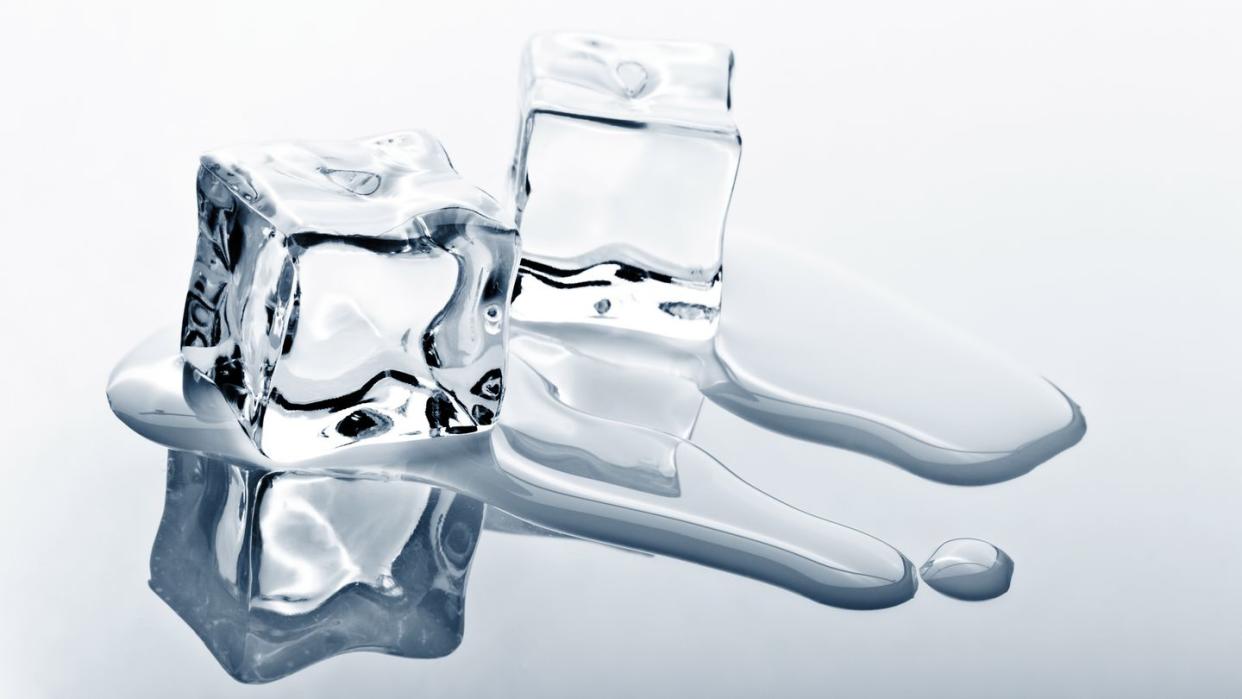A Scientist Says He’s Found the Universal Melting Equation

"Hearst Magazines and Yahoo may earn commission or revenue on some items through these links."
While universal formulas exist for every other phase transition (liquid-to-gas, gas-to-liquid, even solid-to-gas), no such formula exists for predicting when a solid melts into a liquid.
A new study from a scientist at the Queen Mary University of London puts forward a theory that leverages Planck’s constant and electron properties instead of entropy to develop the long sought-after equation.
While a promising solution to the longstanding problem, the theory likely needs to be put up to rigorous testing before we can pop the champagne.
Solids, liquids, and gasses form the three basic phases of matter throughout the universe (let’s leave plasmas and Bose-Einstein condensates for another day). Humans have observed steady changes between these phases for many, many thousands of years (with the changing of the seasons, for example). While the centuries following the scientific revolution have put facts and figures to these matter changes—transformations governed by both temperature and pressure—they haven’t been able to solve one seemingly simple problem: creating a universal description of how solids transition into liquids.
Now, a new study from Kostya Trachenko at Queen Mary University of London puts forward a new theory that appears to finally solve this persistent conundrum. By building on recent developments in liquid theory, which Trachenko highlights in his new book Theory of Liquids, the paper explains how melting thresholds can be accurately predicted with a simple parabolic equation. The results of this study were published in the journal Physical Review E in mid-March.
“Our understanding of the three basic states of matter (solids, liquids, and gases) is based on temperature and pressure phase diagrams with three phase transition lines: solid-gas, liquid-gas, and solid-liquid lines,” the paper states. “There exists no similar function for the third melting line (ML). Here, we develop a general two-phase theory of melting lines (MLs) and their analytical form.”
Trachenko has a long history of probing the relationship between solids and liquids. In 2014, he developed “the world’s longest experiment”—where a dollop pitch took a decade to drop in a funnel—to inspire students to reexamine the relationship between solids and liquids. In 2020, Trachenko also calculated the max velocity of the speed of sound in a solid and a liquid. Considering he’s literally written the book on the subject, Trachenko is well poised to discover the analytical form of melting lines.
Trachenko arrived at this long-sought-after theory by concluding that the ML is set by Planck’s constant (which describes the quantum nature of energy) in conjunction with the valence shell of atoms (the area that contains the outermost electrons), electron mass, and electron charge, according to IFLScience. This is a deviation from many previous efforts that instead explored entropy to derive the formula.
The missing melting line has been a serious head-scratcher for scientists, as all other phase transitions—including sublimation, which is when a solid turns directly into a gas without ever becoming a liquid—have similar equations. So, it makes sense that one would exist for this phase transition as well. However, Trachenko’s work (at least, for now) is only a theory, and will likely need rigorous testing before it can be hailed as the missing piece in the matter-changing puzzle that fills our daily lives.
You Might Also Like
